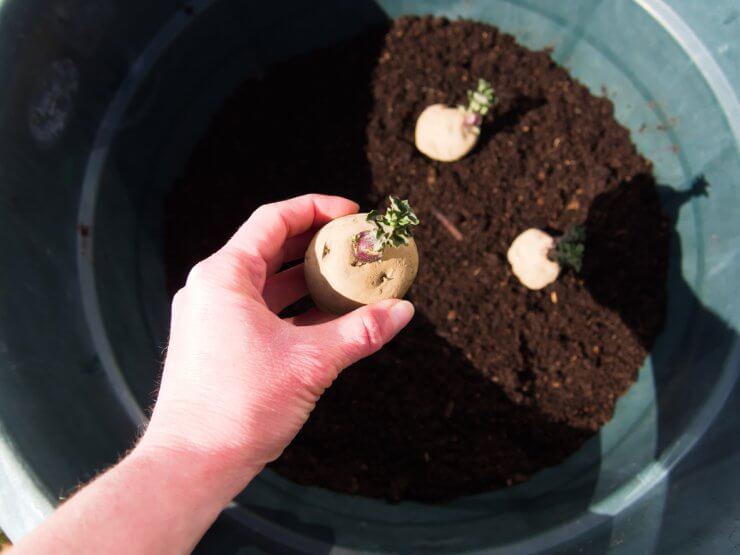
Unlock the secrets of bag cultivation for a bountiful potato harvest
Gardening isn’t just for expansive backyards or dedicated plots of land. Even if you’re constrained by space or looking for a unique gardening adventure, growing potatoes in a bag offers a fantastic solution. This method not only accommodates the urban gardener but also introduces a fun and unconventional approach to harvesting these delectable tubers. Whether you’re a gardening novice or a seasoned green thumb, this guide will walk you through the essentials of producing a healthy potato crop right in a bag. From selecting the right spud variety and preparing your bag to knowing the precise harvest time, you’re about to embark on a fulfilling journey. So, roll up your sleeves and let’s dive into the world of bag-grown potatoes!
Depending on the variety and your growing zone, you can plant potatoes in early to late spring. There are three main categories of potatoes you can grow in your grow bag:
- First early: These spuds will be ready for harvest in about 10 weeks.
- Second early: These potatoes will be ready for harvest in about 13 weeks.
- Maincrop: These are usually the big guys used for baking and mashing and are ready for harvest in about 20 weeks.
The great news about learning how to grow potatoes in a bag is that you can plant any category of potato and yield a healthy crop. I recommend using seed potatoes to start your potato crop. These are potatoes grown specifically to be used for growing and won’t have as many chemicals and even potential germs that store-bought potatoes will have. I like to sprout my seed potatoes before I plant them. This can be done easily by placing them in a cool, light-filled room. That said, an old bag of potatoes you bought at the store that have begun to sprout will grow just fine in a bag.
What kind of bag do you need?
There’s a lot of options out there when learning how to grow potatoes in a bag. You can buy specially designed potato grow bags at your garden store or online. They come in various materials like fabric and heavy plastic, and are relatively inexpensive. I’ve also seen folks re-purpose thick, reusable grocery bags and even big blue Ikea shopping bags. Burlap sacks can be used for potato growing. If you’re in a bind you can even use a medium-sized garbage bag, though you’ll only be able to use it for one season. I prefer the felt-type bags myself because they hold in a decent amount of moisture.
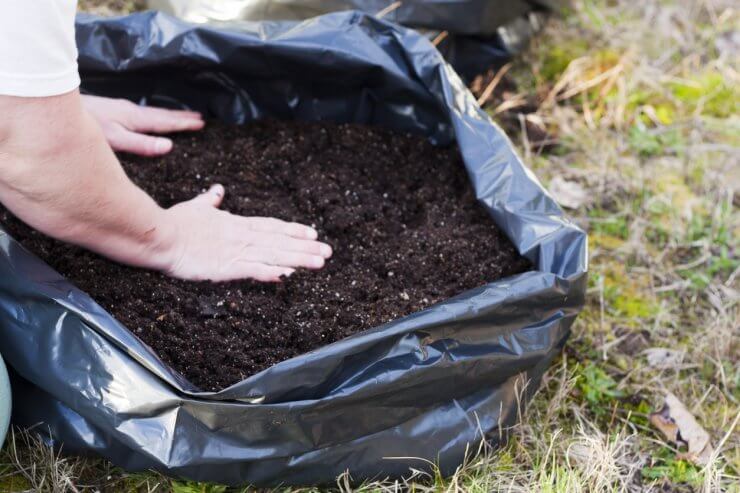
Preparing your bag
If you go the plastic bag route, place a few holes at the bottom of the bag for drainage. Fabric and mesh materials will have natural drainage abilities. Fill the bag with potting soil. If you have other container gardens, you can use the same potting mix. If you want to use fertilizer or compost, add that now and mix thoroughly.
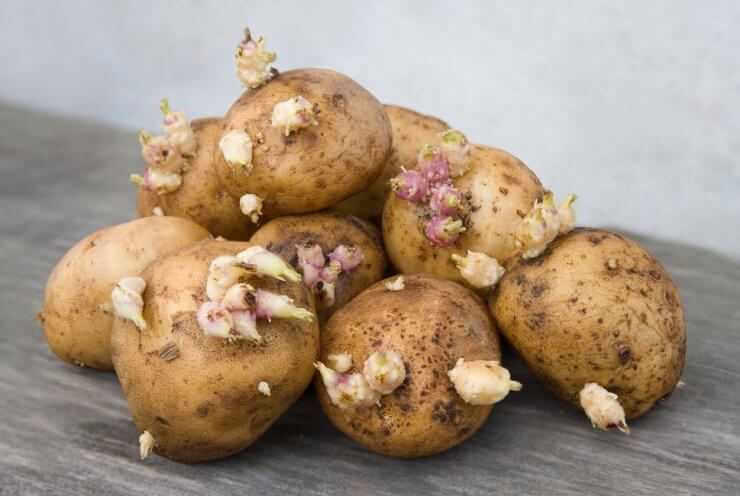
Plant the seed potatoes
Don’t plant the potatoes whole. You can cut the sprouting potato into halves or quarters. Simply section it according to where the growth is, then leave for a few days so the raw surface has time to dry out (this will prevent disease getting in). Other than that, simply plant roots down. The trick is to avoid overcrowding. Depending on your bag size, place three or four potato seed pieces in the soil and cover them with another few inches of soil. Water your bag well and make sure it drains properly.
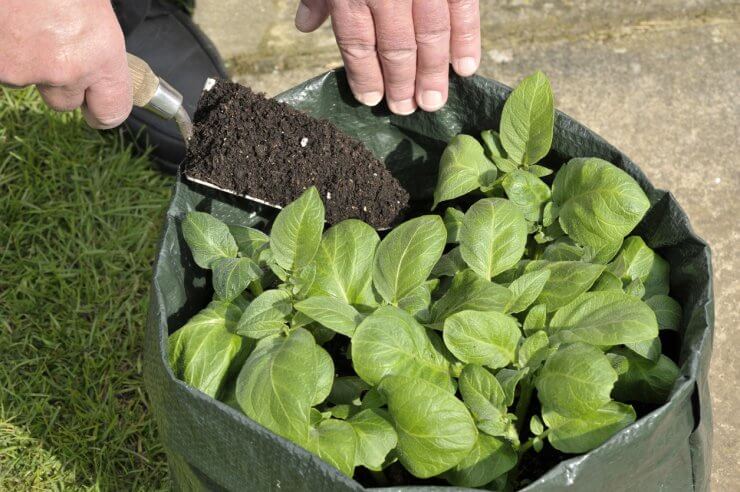
Now what?
Place the bag in an area where it can receive full sunlight, at least six hours each day. Try to avoid putting the bag on a surface that will get too hot, like concrete or asphalt, since that will damage the plants. Water thoroughly. You’ll want to keep doing this when the stems grow to be about 8 to 10 inches above the soil line. Alternatively, you can use hay or thick mulch instead of soil. Once your grow bag is full just continue to water regularly.
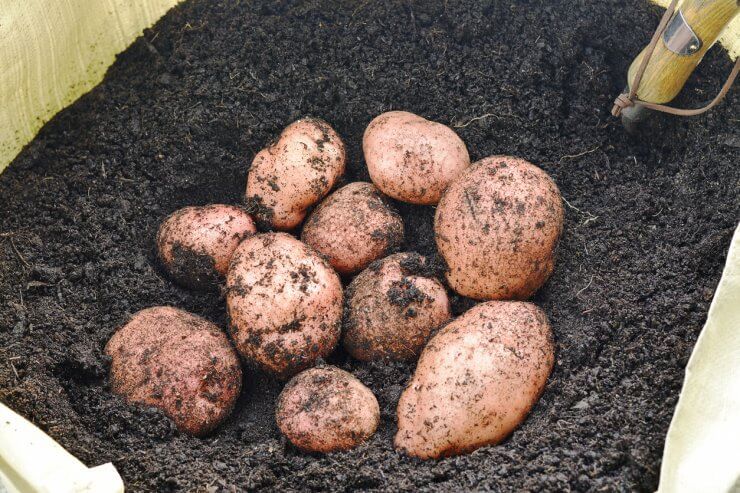
When should you harvest?
Whether you’re learning how to grow potatoes in a bag or growing them in your yard, a good indication for when to harvest is when the plant turns yellow and begins to die. Some varieties will flower, as well. If you planted smaller potatoes you can gently prod the soil and pull them up, but for bigger varieties, you can just dump the bag out once the plant has matured.
Once you learn how to grow potatoes in a bag, you can experiment with other tubers and even other vegetables and fruits. I love using grow bags for blueberry bushes so I can move them around more easily in my yard. Grow bags are a great garden tool especially for folks who want to avoid kneeling in their garden. Grow bags make gardening more accessible for people with mobility issues as well as people who might be renting and don’t have access to garden space.
Want to learn more about growing potatoes at home?
Potatoes and sweet potatoes have been around for thousands of years, and they’re a main staple in many cultures. Both of these vegetables are easy to grow at home. With the How to Grow Potatoes premium gardening guide, you’ll learn all you need to know about growing and enjoying these fabulous root vegetables. From the history and background to specific advice about soil requirements and fertilizer … from easy-to-make and delicious recipes so you can enjoy the fruits of your gardening labor to the nutritional and health benefits of potatoes and sweet potatoes—get it all in our How to Grow Potatoes gardening guide.
Do you already know how to grow potatoes in a bag? What tips do you have? What else have you grown in a bag? Let me know in the comments!


 Previous
Previous

